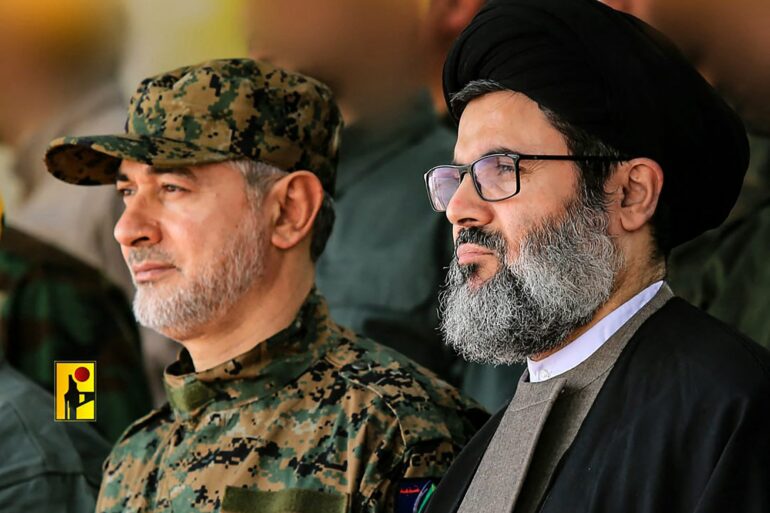🔴 Website 👉 https://u-s-news.com/
Telegram 👉 https://t.me/usnewscom_channel
Israel is on the move again in its fight against Hezbollah in Lebanon.
On Wednesday, the IDF called up two additional reserve brigades and deployed them to northern Israel — and on Thursday, Israeli Prime Minister Benjamin Netanyahu swiftly rejected calls for a US-led cease-fire proposal.
The signal to Hezbollah leader Hassan Nasrallah is clear: Israel is building combat power should an IDF ground invasion become necessary to force the Iranian-backed group north of the Litani River, as required by UN Resolution 1701.
Nasrallah, however, may be slow in getting the message.
In recent days, nearly all of Hezbollah’s top commanders have been eliminated by IDF strikes — save Naim Qassem, Nasrallah’s second-in-command.
Israel continues pummeling Hezbollah intelligence directorates across Lebanon, further blinding the depleted leadership.
At this point, Nasrallah might have better luck holding a séance with his dead commanders than communicating with his remaining command and control.
Nasrallah should be worried. Calling up two more brigades is a sign that Israel is building combat power to exploit and sustain IDF initial entry forces when and if they advance into southern Lebanon.
For now, those fresh troops remain a demonstration of power — and an ominous sword.
Hezbollah is also becoming increasingly isolated. It “cannot stand alone,” Iranian President Masoud Pezeshkian said at the United Nations this week — yet it’s essentially been crickets from Tehran since the IDF began attacking Hezbollah and Islamic Revolutionary Guard Corps targets in Lebanon and Syria.
Yet Nasrallah, at least for now, is still doubling down.
Hezbollah — feebly at this point — has begun to target greater Haifa and Tel Aviv with rockets and missiles.
It’s likely intended as a threat, but attacking those population centers crosses a red line for Israel that Netanyahu and his war cabinet are prepared to back up with force.
The launch points will be added to IDF target lists.
In the fog of war, denial is a danger.
And ever since Mossad hit 4,000 Hezbollah commanders and fighters by planting and detonating explosives in their pagers and walkie-talkies, Nasrallah has been miscalculating.
Israel has changed the rhythm of the war, and Nasrallah is finding himself 10 steps behind his foe — as his remaining, junior-varsity leadership justly fears they’re 20 steps back.
For nearly a year, the IDF and Hezbollah have traded a tit-for-tat exchange in a limited geographic area. Now Israel has expanded the battlefield, hitting terrorist targets in Beirut and deep inside Lebanon in the Beqaa Valley.
All this means we are likely on the cusp of an IDF ground invasion into southern Lebanon.
On Wednesday, Gen. Herzi Halevi, chief of its general staff, said Israel is setting conditions for such a ground offensive.
Expect any incursion to be a marathon, not a sprint.
As evidenced recently in Gaza, the IDF has learned lessons about fighting in urban environments since its 34-day war with Hezbollah in 2006 in this same part of Lebanon.
It is familiar terrain, but the enemy retains home-field advantage.
Building reserve combat power — falling in on equipment, weapons qualifications, distribution of materiel, receipt of orders, preparing plans, movement to assembly areas — takes time, even for the best-trained units.
While reserves fall into place, the Israeli Air Force will continue to strike Hezbollah leadership and the rockets and missiles those leaders have been firing upon Israel.
Launch sites, ammunition-storage facilities, the terrorists firing them and the headquarters exercising command-and-control are the high-priority targets.
Hezbollah consists of approximately 20,000 active personnel. It is not a force-projection military, and it’s unlikely it can mass to conduct a ground incursion into northern Israel.
But defend southern Lebanon, it will.
Setting conditions for the eventual ground invasion runs concurrent with the IDF’s buildup of combat power. Israel will continue to degrade Hezbollah’s tactical communications and gather intelligence on likely engagement areas, defensive positions, caches, tunnels and troop concentrations.
Those targets, when identified, will likely be reduced via artillery, attack drones and direct-fire weapon systems days or hours prior to the assault, to minimize IDF casualties.
The message being sent to Hezbollah’s footsoldiers is simple: The IDF is coming. When the artillery strikes begin, it will be too late.
As for Nasrallah, he’ll either end up dead — or capitulate and withdraw behind the UN-mandated Litani River line.
Mark Toth writes on national security and foreign policy. Col. (Ret.) Jonathan Sweet served 30 years as a military intelligence officer.

